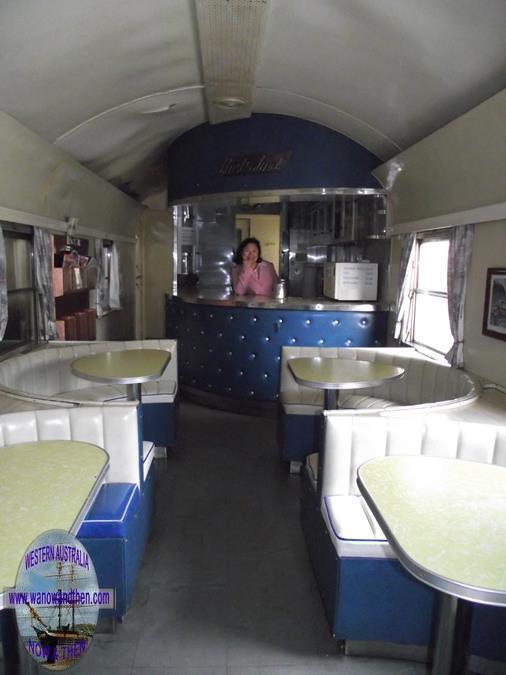|
Tucked away on the north side of the railway line on the opposite side of Guildford Road in Bassendean, is a wonderful collection of trains that have been in service in W.A. There are a couple of
diesel locomotives but the bulk of the collection consists of steam locos.
Whether or not you are a train enthusiast, it is the age of steam that seems to have all the romance and adventure attached to it and it is the steam trains that everyone seems to be most interested in.
Today we live in a world dominated by moulded plastic. A brief walk through the old carriages will give you some idea of how much we have lost in terms of craftsmanship, attention to detail
and things that were built to last.
The museum first opened in 1974 and one of the main concerns was the damage done to exhibits through exposure to the weather. The roof that covers most exhibits today was built in stages from 1991 to 2004.
Some of the buildings on the site are re-located heritage structures including one from the rail siding of Zanthus out on the Nullabor.
Wandering round the exhibits you will find some information about how different things were before the age of air-conditioned comfort and refrigeration. One particularly interesting occurrence was that twice a
year, the passenger carriages with a corridor on one side, were turned around.
In the hot months the corridor faced north towards the prevailing angle of the sun. This protected the passenger compartments from the direct rays of the sun. In the cooler months the carriages were turned so
that the corridor faced south leaving the passenger compartments to bathe in whatever warmth the sun could give.
Before the age of refrigeration, drinking water was kept cool by using a similar principle to the Coolgardie safe. Large water bags allowed slow evaporation so that the water they contained was kept as cool as
possible.
The age of steam, as romantic as it seems today, came with its own special set of problems. The coal burning engines were often the cause of bush fires in the middle of long hot summers and water filling
stations had to be placed at regular intervals on the line to replenish water in the engine's boiler.
The oldest engine in the museum is Katie. This engine served the Fremantle to Guildford line and first entered service in 1881. There is even a small mine locomotive 'Freudie' that was
used on the goldfields.
One locomotive in the museum is particularly famous, it was used to transport pearl divers from Perth to Coolgardie when miner Modesto Varischetti was
trapped in a flooded mine.
A large exhibition hall houses railway memorabilia and helps to tell the story of the railways in Western Australia. Finally there is also a model railway cub housed in a building at the rear of the museum.
If you are even slightly interested in trains and the history of the railways in W.A. then you will really enjoy spending a few hours at the museum.
The buffet and dining cars in the museum can be booked for special events and are particularly popular for children's birthday parties.
The museum and the invaluable work done to maintain and restore old trains is made possible by a group of dedicated volunteers.
The museum is always looking for more volunteers. You can help with the maintenance of the exhibits, with restoration or assist with the running of the museum.
For more details about opening times, entry fees and all sorts of other information and photographs you can visit the museum's website from the link below.
|



Interesting railway links
H.O.W.A.R.A.S
Hortham Valley Tourist Railway
|






